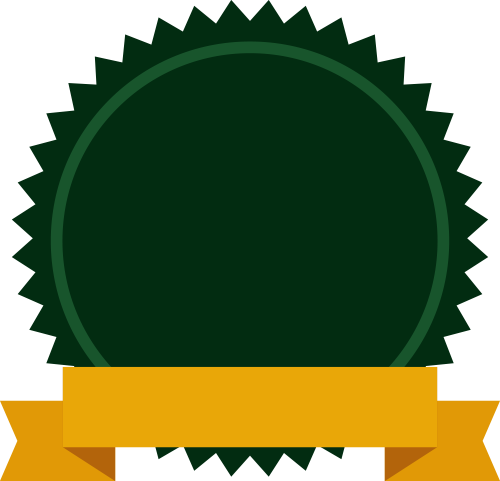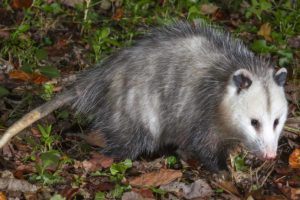Best Possum Deterrent
DID YOU KNOW?
Possums can transfer disease like tuberculosis and toxoplasmosis if they come in close contact with people.
To make sure you’re safe, take preventative measures against possums on your property.
The Best Possum Deterrent
If you’ve noticed damage to your compost or garden, you may have an opossum (or possum) problem. While not aggressive, they still are nuisance animals that can cause significant destruction to your yard. Preventing an issue is the wisest action before it gets out of hand. The best possum deterrent works by playing on their instincts to avoid predators and unpleasant odors.
Continue reading to learn more about using these products for maximum effectiveness.
How We Found the Best Possum Deterrent
8 Reviewers
27 Products Considered
3 Products Reviewed
3 Top Picks
Possum Problem?

Plantskydd Rabbits & Small Critters Organic Repellant
Pros
- Covers a large area with one purchase
- Deters several other species of nuisance wildlife
- Long-lasting with one application
- Weather-resistant
- Doubles as a fertilizer
Cons
- Can’t use in gardens with food plants
- Clumps if it gets damp
- May attract carnivores
OUR VERDICT
Plantskydd Rabbits & Small Critters Organic Repellant uses an opossum’s instinct to avoid danger and its keen sense of smell to deter these pests.
Our Review
Plantskydd Rabbits & Small Critters Organic Repellant contains dried pig and cow blood to keep opossums and other pests out of your garden and yard. You can use it as a perimeter barrier or in places where you’ve seen the damage. The seven-pound container covers a large area to maximize its value. However, you shouldn’t use it on food plants.
The repellant is long-lasting and will continue working for several weeks. It doesn’t have an odor so that you can use it near your home. It isn’t effective against meat-eating animals and may even attract them—including your dog.
article continues below

MTL Evictor Eye Solar Powered Animal Repeller
Pros
- Affordable
- Won’t harm pets or small children
- Humane solution
- Fully automated to set it and forget it
- Excellent coverage with two devices
Cons
- The solar battery may not charge during the winter in northern areas
- Some may find the constant blinking annoying
OUR VERDICT
The MTL Evictor Eye Solar Powered Animal Repeller offers a safe and humane way that is waterproof for year-round use.
Our Review
The MTL Evictor Eye Solar Powered Animal Repeller provides an excellent solution if you’re wondering how to scare opossums away from house. It uses solar power with long-lasting battery life per charge. It works by emitting a flashing bright light that an animal can see within its 500-yard range. You don’t have to worry about running it since it is fully automated to turn on at dusk.
Proper placement is essential to avoid disturbing family members or neighbors. The device is small at only three inches by three inches. Install it at the recommended height to target a particular animal. You should set it at about a foot high for an opossum.

Hoont Solar Powered Motion Activated Ultrasonic with Flashing Strobe Outdoor Animal and Pest Repeller
Pros
- Also works to deter deer, raccoons, and rabbits
- Humane
- Can use all year round
- Waterproof
- Solar Powered
Cons
- Must manually turn on/off
- Sound can be annoying
- Some reports that solar panels not enough to keep batteries charged
OUR VERDICT
The Hoont Solar Powered Motion Activated Ultrasonic with Flashing Strobe Outdoor Animal and Pest Repeller offers an effective way to frighten off nuisance wildlife with light and sound that is safe to use around small children and pets.
Our Review
Your property is your domain so when it comes to unwanted pesky interlopers, you have to get creative. The Hoont Solar Powered Motion Activated Ultrasonic with Flashing Strobe Outdoor Animal and Pest Repeller works great for possum, deer, racoons, and rabbits. Simply insert the stake into the ground and pick your settings: there are 3 ultrasonic frequency settings – L, M, H – which vary dependent on the critter you’re trying to deter, and 7 sensitivity – or volume – settings. Make sure to check the instructions for the proper frequency setting.
The unit works with the use of an infrared motion sensor, 3 AA rechargeable batteries and a solar panel, a flashing LED strobe light, and an on/off switch. The solar panel recharges the batteries, which can also be charged via a USB plug. When the unit detects a pest via the motion sensor, the lights with flash (optional) and your chosen frequency will sound at the setting chosen, frightening the intruders and scaring them away. Permanently.
Introduction to Opossums
The odd-looking opossum is the only marsupial in the United States. Like kangaroos, the female carries her young in her pouch for the first few months. They can grow up to 30 inches long and weigh around 14 pounds as adults. They are excellent climbers thanks to their prehensile tail and its opposable thumbs on their rear paws.
You’ll find opossums all over North and South America. They prefer wooded habitats near water. They are omnivorous and will eat anything they can from fruits, insects, and even your garden plants. They aren’t as destructive as other nuisance wildlife like raccoons. However, they make kill the occasional chicken. They aren’t long-lived with a lifespan of two years or less.
You’ve likely heard of their habit of playing dead to avoid confrontations. The term is a bit of a misnomer since it’s an involuntary response to fear. Opossums are nocturnal which means that they’re active at night. They spend much of their days in trees, so you may not see them often. Unlike many wildlife species, opossums rarely carry rabies and don’t pose that health threat.
Signs of an Opossum
While an opossum is sometimes elusive, the telltale signs of its presence are not. You may see damage in your garden or to birdfeeders. They may rummage through your compost heap since they’re not picky about what they eat. You may also find damage to the exterior of your house or outbuildings. Look for its pawprints in soft soil. Their tracks are distinctive and resemble a human hand.
How to Discourage These Pests
There are several things you can do to discourage an opossum from taking up residence in your yard. First, make your home inhospitable to them. Make sure the garbage cans secure tightly to prevent midnight raids. Rinsing them occasionally will cut down on the odors that may attract them. Also, don’t leave out pet food or water. It’s essential that the animals don’t associate your property with food.
Second, patch up any holes in your foundation. You can also put fencing around the perimeter of your porch to keep an opossum from making a den under your house. Finally, you can take a proactive approach with a granular product such as Plantskydd Rabbits & Small Critters Organic Repellant. Granules with the scent of other animals will deter opossums.
Also, inspect the exterior of your home including attic vents. You should trim any trees that are close to your house too. Nearby branches can provide access to these pests.
They scare easily, making an audible deterrent like the Diaotec Ultrasonic Animal Repeller an excellent option. The flashing lights of the MTL Evictor Eye Solar Powered Animal Repeller will also discourage nuisance wildlife. Opossums are opportunistic creatures and will move on to habitat without these distractions.
Another option is a sprinkler with a motion sensor. The blast of water will deter most animals without hurting them. It is also environmentally friendly and quite useful for long-term control without the use of poisons.
What You Need to Know
There are legal issues regarding the harvesting of opossums that vary by municipality and state. Many areas consider them game species. That means a hunting season with a permit or license to take them using a trap or cage. It’s imperative that you check with your local extension service or Department of Natural Resources (DNR) about any laws that may restrict what actions you can take.
Some places will allow you as the landowner to get rid of nuisance wildlife year-round and without a license. However, if you rent your home, the laws may vary. That’s why you need to contact the appropriate agency first. Violating them can result in a hefty fine. All of this information makes discouraging opossums with the best possum deterrent preferable to other solutions.
Summary
An opossum deterrent offers an excellent way to keep these pests from your yard safely and legally. Many products will also get rid of other nuisance wildlife to increase their value for you. Prevention is the least expensive option that also reduces the chances of costly damage to your home or property. Whether you use granules or an electric possum deterrent, it’ll pay for itself in the end.





